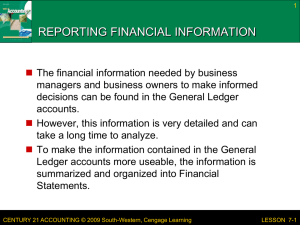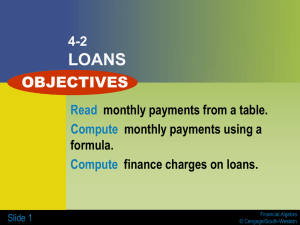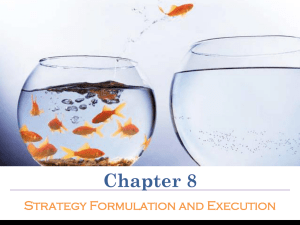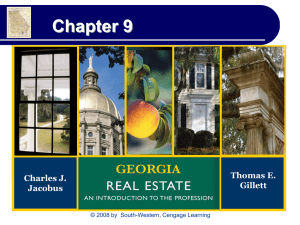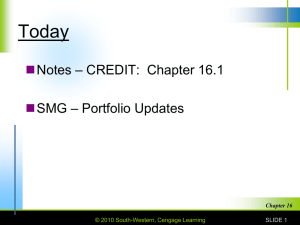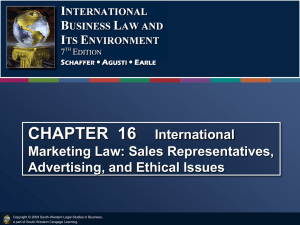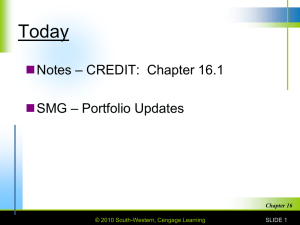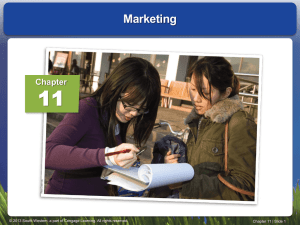Chapter 3
advertisement
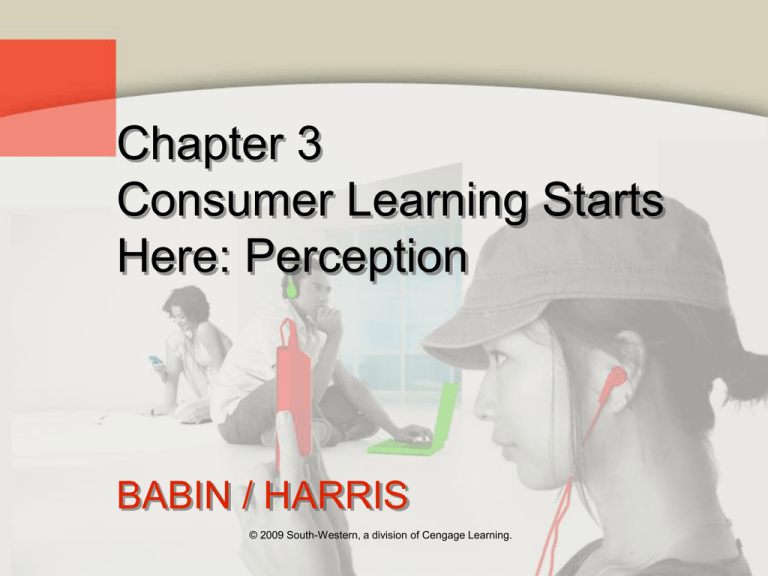
Chapter 3 Consumer Learning Starts Here: Perception BABIN / HARRIS © 2009 South-Western, a division of Cengage Learning. Learning Outcomes LO1 Understand the elements of consumer perception. LO2 Know the phases in the consumer perception process. LO3 Be able to apply the concept of the JND. © 2009 South-Western, a division of Cengage Learning. 3-2 Learning Outcomes LO4 Apply the concepts of implicit and explicit memory. LO5 Know the ways in which a consumer’s attention can be enhanced. LO6 Know the difference between intentional and unintentional learning. © 2009 South-Western, a division of Cengage Learning. 3-3 LO1 Understand the elements of consumer perception. © 2009 South-Western, a division of Cengage Learning. LO1 Learning and Perception • Learning – a change in behavior resulting from the interaction between a person and a stimulus. • Perception – a consumer’s awareness and interpretation of reality. • Value involves learning, and consumer learning begins with perception. • Learning can be intentional or unintentional. © 2009 South-Western, a division of Cengage Learning. 3-5 LO1 Elements of Consumer Perception Exposure Attention Comprehension © 2009 South-Western, a division of Cengage Learning. 3-6 LO1 Attention Consumers are given the opportunity to attend to the marketer’s message. © 2009 South-Western, a division of Cengage Learning. 3-7 LO2 Know the phases in the consumer perception process. © 2009 South-Western, a division of Cengage Learning. LO2 Exhibit 3.3 Consumer Perception Phases © 2009 South-Western, a division of Cengage Learning. 3-9 LO2 Organization Process Like sorting mail! © 2009 South-Western, a division of Cengage Learning. 3-10 LO2 Organization Reactions Assimilation Accommodation Contrast © 2009 South-Western, a division of Cengage Learning. 3-11 LO2 Accommodation What is this? © 2009 South-Western, a division of Cengage Learning. 3-12 LO2 Selective Perception Selective exposure Selective attention Selective distortion © 2009 South-Western, a division of Cengage Learning. 3-13 LO2 Exhibit 3.5: The Vicary Subliminal “Persuasion” Study Is this subliminal stuff true? © 2009 South-Western, a division of Cengage Learning. 3-14 Subliminal Groovin! Can you play a record backwards – or is it just another subliminal rumor? © 2009 South-Western, a division of Cengage Learning. 3-15 LO2 Original Penguin is selective in its brand exposure. © 2009 South-Western, a division of Cengage Learning. 3-16 LO3 Be able to apply the concept of JND. © 2009 South-Western, a division of Cengage Learning. LO3 JND (Just Noticeable Difference) • Represents how much stronger one stimulus has to be relative to another so that someone can notice that the two are not the same. • Weber’s Law – the ability to detect differences between two levels of a stimulus is affected by the original intensity of the stimulus. © 2009 South-Western, a division of Cengage Learning. 3-18 Better-Tasting Coke? © 2009 South-Western, a division of Cengage Learning. 3-19 LO3 JND: Marketing Implications Pricing Quantity Quality Add-on Purchases © 2009 South-Western, a division of Cengage Learning. 3-20 LO3 JMD (Just Meaningful Difference) Represents the smallest amount of change in a stimulus that would influence consumer consumption and choice. © 2009 South-Western, a division of Cengage Learning. 3-21 LO3 Mere Exposure Effect • Consumers will prefer an object to which they have been exposed. • Relevant points: – – – – – preattentive easy to elicit greatest effect on novel objects weak effect best when consumer has lower involvement © 2009 South-Western, a division of Cengage Learning. 3-22 Ethical Dilemmas in Mere Exposure Can mere exposure turn us into criminals? © 2009 South-Western, a division of Cengage Learning. 3-23 LO4 Apply the concepts of implicit and explicit memory. © 2009 South-Western, a division of Cengage Learning. LO4 Implicit and Explicit Memory Implicit memory Unintentional learning Explicit memory Intentional learning © 2009 South-Western, a division of Cengage Learning. 3-25 LO4 Attention • The purposeful allocation of cognitive capacity toward understanding some stimulus. • Types: – Preattention – Selective – Involuntary • Orientation reflex – a natural reflex that occurs as a response to a threat. © 2009 South-Western, a division of Cengage Learning. 3-26 LO5 Know the ways in which a consumer’s attention can be enhanced. © 2009 South-Western, a division of Cengage Learning. LO5 Attracting Attention How are your going to get her attention? © 2009 South-Western, a division of Cengage Learning. 3-28 LO5 Ways to Enhance Attention Intensity Contrast Movement Surprise Size Involvement © 2009 South-Western, a division of Cengage Learning. 3-29 LO6 Know the difference between intentional and unintentional learning. © 2009 South-Western, a division of Cengage Learning. LO5 Learning Is this intentional or unintentional learning? © 2009 South-Western, a division of Cengage Learning. 3-31 LO5 Intentional vs. Unintentional Learning Intentional learning Consumers set out to specifically learn information devoted to a certain subject. Unintentional learning Consumers simply sense and react (or respond) to the environment. © 2009 South-Western, a division of Cengage Learning. 3-32 LO6 Learning Theories Behaviorism Information Processing © 2009 South-Western, a division of Cengage Learning. 3-33 LO6 Classical Conditioning A change in behavior that occurs simply through associating some stimulus with another stimulus that naturally causes a reaction. © 2009 South-Western, a division of Cengage Learning. 3-34 LO6 Instrumental Conditioning Behavior is conditioned through reinforcement. © 2009 South-Western, a division of Cengage Learning. 3-35 LO6 Exhibit 3.7: Discriminative Stimuli, Behavior, and Reinforcer © 2009 South-Western, a division of Cengage Learning. 3-36
